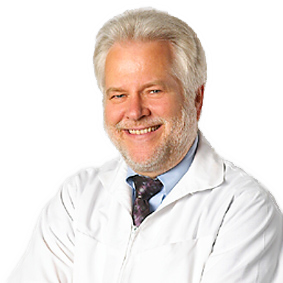Courtesy of:
John H. Keefe III, D.C.
(918) 663-1111
IN THE NEWS: Codeine - Not for Kids, Says FDA By Editorial Staff When it comes to testing the effectiveness or safety of medications, kids are essentially left out in the cold. After all, how many parents want their child to be the test subject? The unfortunate result: We tend to find out whether children's medications work or are safe with real-world experience and by applying adult experiences to child guidelines for use. With the spotlight on pain medications, particularly the opioid class, the Food and Drug Administration recently strengthened its warning against children using prescription medications that contain codeine or tramadol – two opioid pain relievers. According to the FDA warning, which will be added to all relevant medication labels, children younger than age 12 should never be given any prescription med containing codeine for pain or cough, or tramadol for pain, and recommends against their use in children ages 12-18. The FDA release announcing the label changes made the health risk clear: "These medications carry serious risks, including slowed or difficult breathing and death, which appear to be a greater risk in children younger than 12 years, and should not be used in these children." Note that while codeine is also an ingredient in some over-the-counter cold / flu medications, the FDA did not restrict their use in children, but did recommend parents talk to a doctor before administering them to their children. Don’t make your kids drug addicts chiropractic offers both a safe and effective treatment for colds and flues as well as pain.
WELLNESS: Dirt has a microbiome, and it may double as an antidepressant or Gardening is great therapy. Your garden has its own microbiome, and research suggests it’s good for you. Our health depends on the flourishing microbiome in our guts—and on how much of the natural world’s microbiome we let infiltrate. Lately, thanks to modern life, we don’t let in a lot. But in a string of pioneering studies, scientists are beginning to look at what would happen if we literally inject microbes from the soil into our bodies, reintroducing us to the ancient relationship between bacteria and human. So far, the results have been uplifting—to both the scientists and the subjects they study. Christopher Lowry, a neuroscientist at the University of Bristol, injected M. vaccae into mice and subjected them to a series of stress tests. The ones inoculated with the bacteria showed far less stressed behavior than their untreated counterparts—in fact, they acted as if they were on antidepressants. In a 2007 paper published in the journal Neuroscience, Lowry and his team wrote that the bacteria activated groups of neurons in the mouse brains responsible for producing serotonin—a neurotransmitter that, when impaired, can cause depression. Even more intriguingly, the neurons that lit up were also known to be related to immune response, suggesting an intimate connection between the immune system and emotional health. The world of biomedical research has already fallen in love with the promising realm of the human gut microbiome. A body of emerging evidence tells us the millions of microbes in our digestive tract influence our immune systems, our smells, our mood, and possibly even our attractiveness to mosquitoes—and to other people. There’s now pretty good evidence to draw at least an outline of a conclusion: Breathing in, playing in, and digging in dirt may be good for your health. Our modern, sterilized life in sealed-off office buildings and homes are likely not. Researchers have already found clear evidence that childhood exposure to outdoor microbes is linked to a more robust immune system; for example, Bavarian farm children who spent time in family animal stables and drank farm milk had drastically lower rates of asthma and allergies throughout their lives than their neighbors who did not.
CONDITION OF THE WEEK: What Are Cervicogenic Headaches? Headaches are a very common problem that can have multiple causes ranging from stress to trauma. To make matters worse, there are MANY different types of headaches. One such type is the “cervicogenic headache” (others include migraines, cluster headaches, etc.). The main distinction between the symptoms associated with cervicogenic headaches and those associated with migraine headaches are a lack of nausea, vomiting, aura (a pre-headache warning that a headache is about to strike), light and noise sensitivity, increased tearing with red eyes, one-sided head, neck, shoulder, and/or arm pain, and dizziness. The items listed above are primarily found in migraine headache sufferers. The following is a list of clinical characteristics common in those struggling with cervicogenic headaches: Unilateral (one-sided) head or face pain (rarely is it on both sides).Pain is localized or stays in one spot, usually the back of the head, frontal, temporal (side) or orbital (eye) regions. Moderate to severe pain intensity. Intermittent attacks of pain that last hours to days. Pain is usually deep, non-throbbing, unless migraines occur at the same time. Head pain is triggered by neck movement, sustained awkward head postures, applying deep pressure to the base of the skull or upper neck region, and/or taking a deep breath, cough or sneeze can trigger head pain. Limited neck motion with stiffness. Infrequently, the cervicogenic headache sufferer can present with migraines at the same time and have both presentations making it more challenging to diagnose. The cause of cervicogenic headaches can be obvious such as trauma (sports injury, whiplash, slip and fall), or not so obvious, like poor posture. A forward head posture can increase the relative weight applied to the back of the neck and upper back as much as 2x-4x normal. Last month, we discussed the intimate relationship between the upper two cervical vertebra (C1 & C2) and an anatomical connection to the covering of the spinal cord (the dura) as giving rise to cervicogenic headaches. In summary, the upper three nerves innervate the head and any pressure on those upper nerves can result in a cervicogenic headache. Doctors of chiropractic are trained to examine, identify, and treat these types of potentially debilitating headaches.
FUNNY BONE: When my three-year-old was told to pee in a cup at the doctor’s office, he unexpectedly got nervous. With a shaking voice, he asked, “Do I have to drink it?”@@ A scientist tells a pharmacist, “Give me some prepared tablets of acetylsalicylic acid.” “Do you mean aspirin?” asks the pharmacist. The scientist slaps his forehead. “That’s it!” he says. “I can never remember the name.”@@ Two campers are hiking in the woods when one is bitten on the rear end by a rattlesnake. “I’ll go into town for a doctor,” the other says. He runs ten miles to a small town and finds the only doctor delivering a baby. “I can’t leave,” the doctor says. “But here’s what to do. Take a knife, cut a little X where the bite is, suck out the poison and spit it on the ground.” The guy runs back to his friend, who is in agony. “What did the doctor say?” the victim cries. “He says you’re gonna die.”
Visit our web sites: keefeclinic.com & facebook.com/keefeclinic





